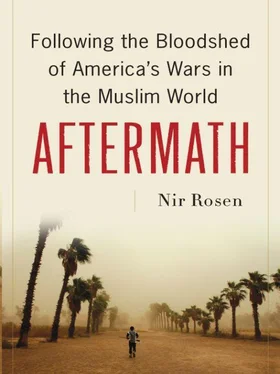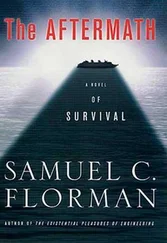CHAPTER SIX
The Battle of Nahr al-Barid: Iraq Comes to Lebanon
IT WASN’T ONLY IRAQI REFUGEES WHO WERE LEAVING THE COUNTRY. Al Qaeda in Iraq was searching for new sanctuaries as well. Most countries in the region were harsh dictatorships with strong security services that would never countenance an influx of the new “Arab Afghans,” veterans of the jihad in Iraq, the way they had after the anti-Soviet jihad of the 1980s. But with its weak state, sectarian structure and divisions, foreign interventions, and extreme social inequalities, Lebanon was especially vulnerable to the destabilizing influences of the civil war in Iraq. Best of all, large swaths of it were ungoverned, and there was a Sunni community that felt increasingly insecure. Though there were many differences between the two countries, Lebanon showed a possible glimpse of what parts of Iraq might look like—especially if, as in Lebanon, there was never any process of justice, truth, or accountability to grapple with the civil war and the massacres.
The wave of Sunni extremism and the regional rivalry between Iran and Saudi Arabia were especially felt in Lebanon. Fighting in the northern Nahr al-Barid refugee camp near Tripoli and street clashes in January and May 2008 were a sign that the war in Iraq was spilling over into neighboring countries, with fighters, weapons, tactics, and sectarian tensions all making their way to Lebanon and elsewhere. The clashes were also a sign that America’s “New Middle East,” based on supporting U.S. client states at the expense of rival movements that had more popularity or legitimacy, was failing. America’s support for Sunni regimes that manipulated sectarianism was increasing radicalism in the region and threatening to provoke a larger regional conflict.
While many analysts were promoting a theory of “Shiite revival” in the Middle East, recent events in Lebanon and the region pointed to a Sunni revival. According to a Lebanese political scientist I spoke to, Amer Mohsen, the Shiite revival, spoken of with fear by Sunni dictators in the Middle East and with pride by supporters, was passé. It had happened in 1979, when the Shah of Iran was overthrown by Ayatollah Khomeini. “If by revival we designate a movement revolutionizing Shiite thought or the way Shiites think of themselves, this already happened in 1979 in much of the Middle East, and that movement reached its apex and is no longer in fashion,” he said. “Hizballah in Lebanon is gaining popularity not based on the notions of the Iranian Revolution but as a communitarian movement working in the context of identity politics, much like the other movements in Lebanon. And it is the same thing in Iraq, where Shiite movements have no clear ideological commitment. If by revival we mean increased power for Shiite groups within their countries, that would apply solely to Iraq, where the fall of Saddam supposedly catapulted Shiites to a position of power they had not had since the creation of the country. But this is also a local phenomenon, whose conclusion is still undecided. There is clearly (in the case of Iraq and, to a lesser extent, Lebanon) a phenomenon of Shiites identifying more openly with their sectarian affiliation and building political projects on that basis. But that is a case of the resurgence of identity politics throughout the Middle East in the last years, in which sense, there is a Shiite revival, a Sunni revival, a Druze revival, an Alawite revival, and a Kurdish revival all happening simultaneously.”
Amal Saad Ghorayeb, an expert on Shiite movements I spoke to during my time in Lebanon, saw a Sunni revival in the region running on two parallel tracks: “one being the Al Qaeda paradigm, whose sectarianism is religiously, doctrinally, and ideologically based, and which aspires to represent a new resistance, a revolutionary and populist model for the region’s Sunnis. While it is not necessarily a reaction to the Shiite Hizballah-Iranian model, it does seek to compete with it. It is insurgent (on a national level) and a resistance or jihadi trend (on the global level). It is a transnational antisystem phenomenon or antiestablishment, anti-world order movement.
“In parallel with this trend is the narrower state-sponsored Sunni sectarian model, which is social and political in nature, is closely interwoven with ruling establishments and personalities, may or may not overlap with the Salafi trend in some cases, but is ultimately a reaction to what is perceived as a growing Shiite threat, as distilled from Arab rulers’ discourse and the media. Unlike the Al Qaeda paradigm, though, it cannot compete ideologically with Shiite resistance, nor does it seek to. The Sunni revival is a product of insurgent/ jihadist/antiestablishment forces as well as proestablishment forces. In both cases, a revival is taking place insofar as Sunni Islam is seen as being the most effective tool for mobilizing support and achieving objectives.”
Mohsen believed that what mainstream Sunni leaders were doing was taking the racist discourse of anti-Shiite extremists (like Zarqawi) and inflating it into a mainstream discourse among Sunni masses. Saad Ghorayeb, on the other hand, insisted that Sunni Arab regimes had appropriated this discourse not so much from Salafis but from the United States, whose leaders and pundits spoke of those who are loyal to Iran and of a Shiite crescent.
Lebanon, in particular, had seen a spectacular revival of Sunni identity and a reshaping of traditional Sunni attitudes since 2005. Order in Lebanon had been maintained by Syrian political and military domination, now referred to as an occupation by opponents of Syria. The Syrians had first intervened in Lebanon in 1976 at the request of the Lebanese president to support right-wing militias against a coalition of leftists and Palestinians who threatened to overturn the Maronite Christian-dominated order. In 1987 they returned, this time in support of Sunnis who had grown tired of the militia wars being fought between the Shiite and the Druze minorities. Both times the Syrian intervention met with American, Israeli, and Saudi approval: first the Syrians marketed themselves as opponents of the coalition between the Palestinian resistance groups and leftists, and the second time they took advantage of American fear of Hizballah, going so far as to attack the Shiite militia.
The Syrian era ended in February 2005, when Prime Minister Rafiq al-Hariri was assassinated, and since then a major divide has emerged between Sunnis and Shiites in Lebanon, with the Christians who had once dominated the country increasingly losing their political significance and becoming marginalized. Lebanon gained independence from France in 1943. Christians and Muslims divided powers and apportioned positions based on sectarian identity, with Maronite Christians benefiting from a six-to-five ratio and Sunni Muslims dominating their Shiite coreligionists. In a sense Lebanon has never had a government but rather a power-sharing arrangement. At first the system of distributing political posts according to sect was merely based on custom. The 1991 Taif Accords, which ended the civil war, enshrined this system while granting a larger proportion to Muslims, allocating seats in Parliament on a one-to-one ratio. The president remained a Maronite Christian, with powers reduced in relation to the Sunni prime minister and the Shiite speaker of the Parliament. The Taif Accords were meant to establish a transitional period that would end with the abolition of political sectarianism, but this never happened. Instead the system became more entrenched, and the Lebanese became more connected to their sectarian institutions. Saudi money and the Syrian military presence in Lebanon helped guarantee that the accords held. While other militias were disbanded, Hizballah was allowed to maintain its armed struggle against the Israeli occupation.
Читать дальше











